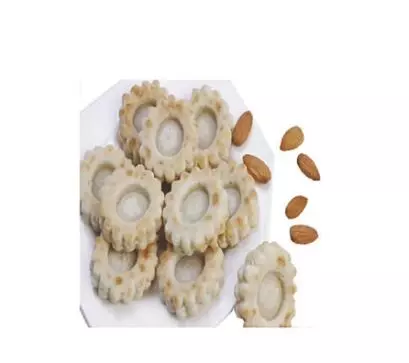With festivities fill the air Hyderabadis, 'Badam Ki Jali' is an emotional connection
India is renowned for its diverse array of sweets, from the Modaks of Western India to the Rasagollas and Pithas of the East, and from the Halwas of the North to the Payasams of the South.
image for illustrative purpose

India is renowned for its diverse array of sweets, from the Modaks of Western India to the Rasagollas and Pithas of the East, and from the Halwas of the North to the Payasams of the South. Yet, there exists a unique and lesser-known sweet delicacy called "Badam Ki Jali," which is a well-guarded treasure primarily found in Hyderabad. Unless you have the privilege of being introduced to it by locals or celebrities, this delectable treat might remain undiscovered. Badam Ki Jali, as the name suggests, is a tray of specially crafted barfi made from almonds and cashews, adorned with intricate patterns, calligraphy, and designs. Few families in Hyderabad has been preserving the legacy of this exquisite sweet for four generations, ensuring it continues to delight palates and preserve tradition.
Badam Ki Jali is believed to have its origins in the old Madras region, now known as Chennai, in Tamil Nadu. Its journey from Madras to Hyderabad is a testament to the diverse culinary heritage of India. What sets Badam Ki Jali apart is not just its unique taste and texture but also the artistry involved in creating its beautiful patterns and designs. This culinary masterpiece has transcended generations, thanks to the dedicated efforts of the Hussaini family.
What's particularly fascinating about the Badam Ki Jali legacy is how it has been passed down through generations, from mothers-in-law to their daughters-in-law. While the women have been the custodians of this treasured recipe, the men in the family have played a significant role in its preservation and propagation.
The process of creating Badam Ki Jali is a labor of love and precision. Almonds and cashews are carefully blended with sugar to form the base of this sweet masterpiece. What sets it apart are the intricate designs and patterns meticulously crafted on the surface, making it a feast for the eyes as well.
The tradition of making Badam Ki Jali has been a rite of passage for generations of women. Mothers-in-law have passed down the secret recipe to their daughters-in-law, ensuring that the legacy endures. This unique form of culinary inheritance has fostered a sense of unity and tradition within the family.

